
These big Boston storms are the stuff of legend
It doesn't seem like it, given the recent winters, but Boston is a snowy place. Which works out; this is a city that loves its bad weather. Even when we hate it, we love to hate it. We talk about blizzards like they're old flames — with nostalgia, regret and (sometimes) relief that it's over.
For a city that loves history, we've certainly had our share of historic storms. We could give you a list of the biggest snow-droppers and rain-soppers in Greater Boston history. But just about everybody does that.
So when the rest of local media zigs, WBUR zags. Instead of focusing on the numbers, we want to consider the storms that had a real effect on the regional psyche.
Forget the record books. Here are the storms that made it into Boston's lore.
Snow
The Blizzard of '78
The lore-iest of Boston storms, older folks talk about this like they were Old Nan from Game of Thrones. People will sit and tell you stories — the same stories, year after year — about how long it snowed, how unexpected it was, how people forget there was another significant blizzard just a few weeks prior, how "128 was a parking lot." And if you're the writer of this list, you're told how your dad walked down the hill and a mile up Broadway — and back — to get you baby formula.
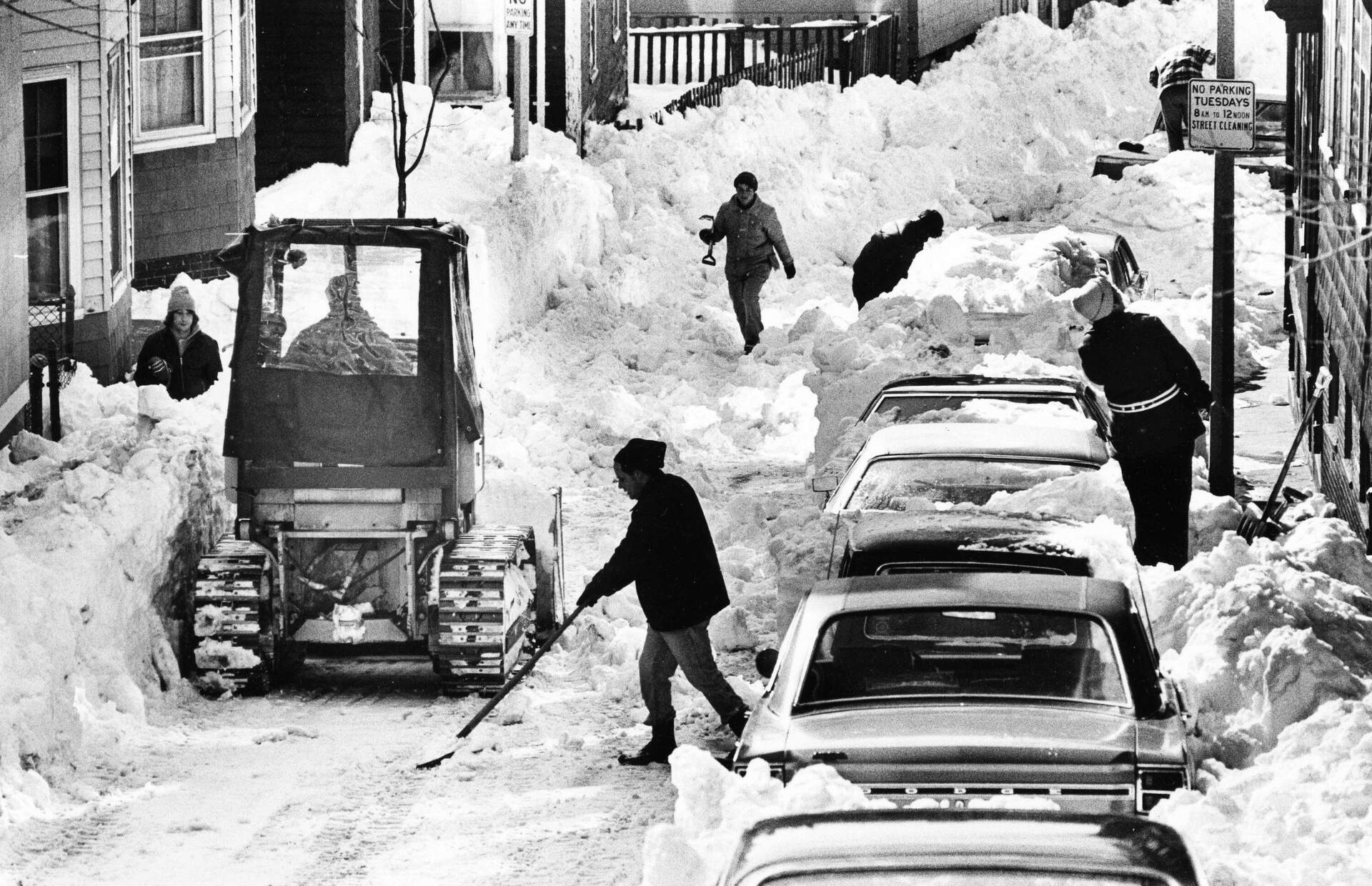
April Fool's storm, 1997
Life's already hard for meteorologists. But it's harder when it's 50-something degrees outside and they're telling you to expect two feet of snow. That was the case in late March of 1997. When the flakes finally came, the entire region had the same reaction:
But serious they were, and serious it was, dumping more than 25 inches on Logan Airport on April 1. Much of the snow melted within days, adding to the sense it was all a prank.
2015's month of blizzards
Just one of these storms would have made it into local lore, but for a solid month in early 2015, we were croaked by three different foot-plus blizzards and one nasty nor'easter, which left us all walking and driving between literal walls of snow.
It also led to one of then-Boston Mayor Marty Walsh's most infamous quotes, intoning like a stern teacher: "This isn't Loon Mountain."
This was the month the T finally gave out, with huge swaths of the system out of commission for days at a time. Newly minted Gov. Charlie Baker, who distressingly refused to wear the Massachusetts Emergency Management Agency fleece vest popularized by his predecessor, said fixing the beleaguered transit system was a priority, starting a gubernatorial tradition that continues to this day.
Combined, these storms were so bad that many thought we had finally topped '78 for the greatest snow story in Boston history. Maybe you said as much to a '78 survivor, and maybe they immediately told you about how your dad walked down the hill and a mile up Broadway — and back — to get you baby formula.
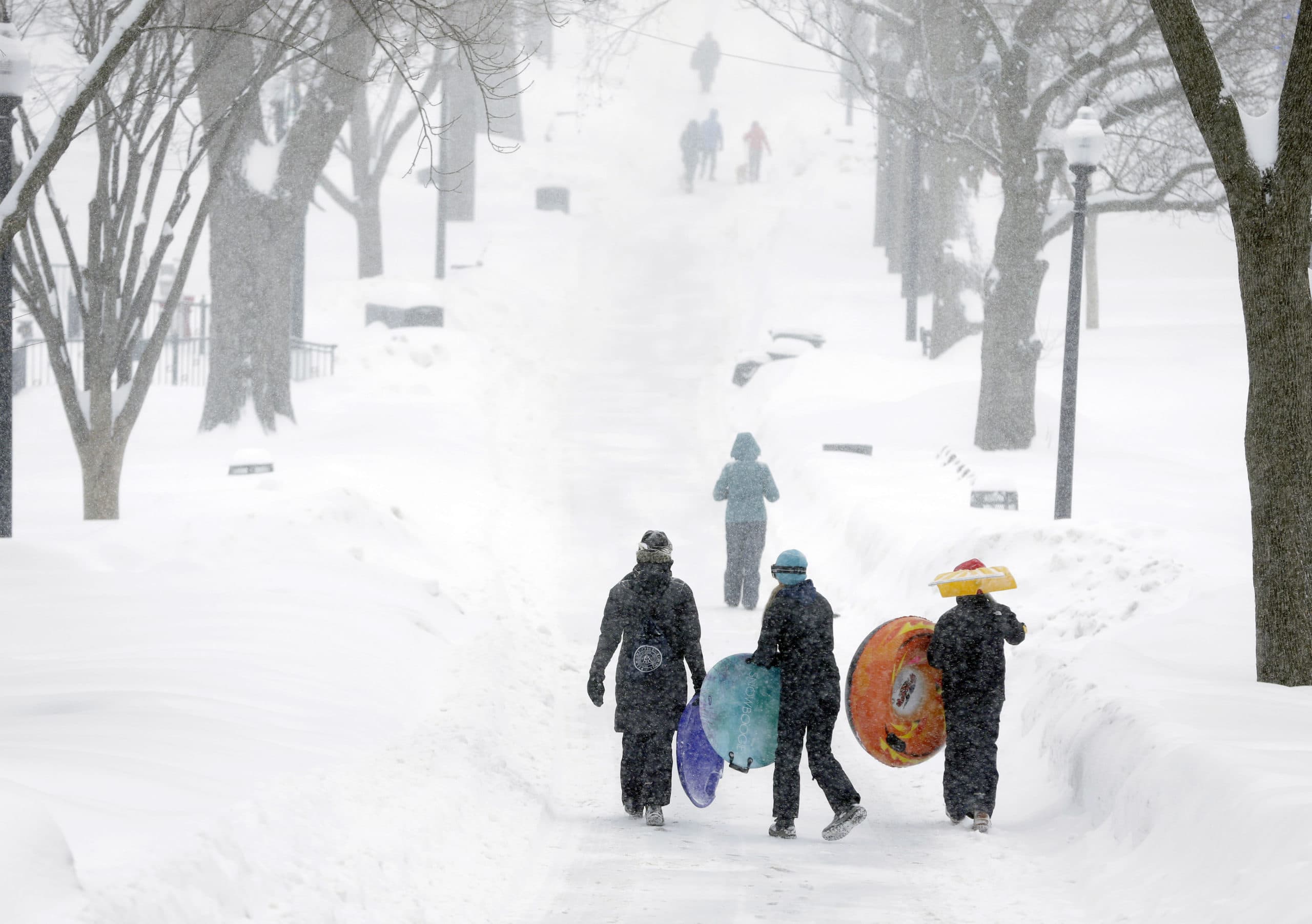
Great Blizzard of 1888
Oh, you thought this was just a list of recent nostalgia? This is Boston; our nostalgia goes back centuries.
No one alive remembers this storm, of course, but it's part of our lore because of the damage it caused. The blizzard was a disaster, killing more than 400 people up and down the East Coast. In parts of Connecticut and Western Massachusetts, the storm dropped more than 40 inches of snow.
The resulting pile of powder led to gridlock in major cities, with people unable to get anywhere thanks to seemingly immovable mountains of snow. That in turn helped to spur the adoption of subways in cities like Boston and New York, according to PBS's American Experience.
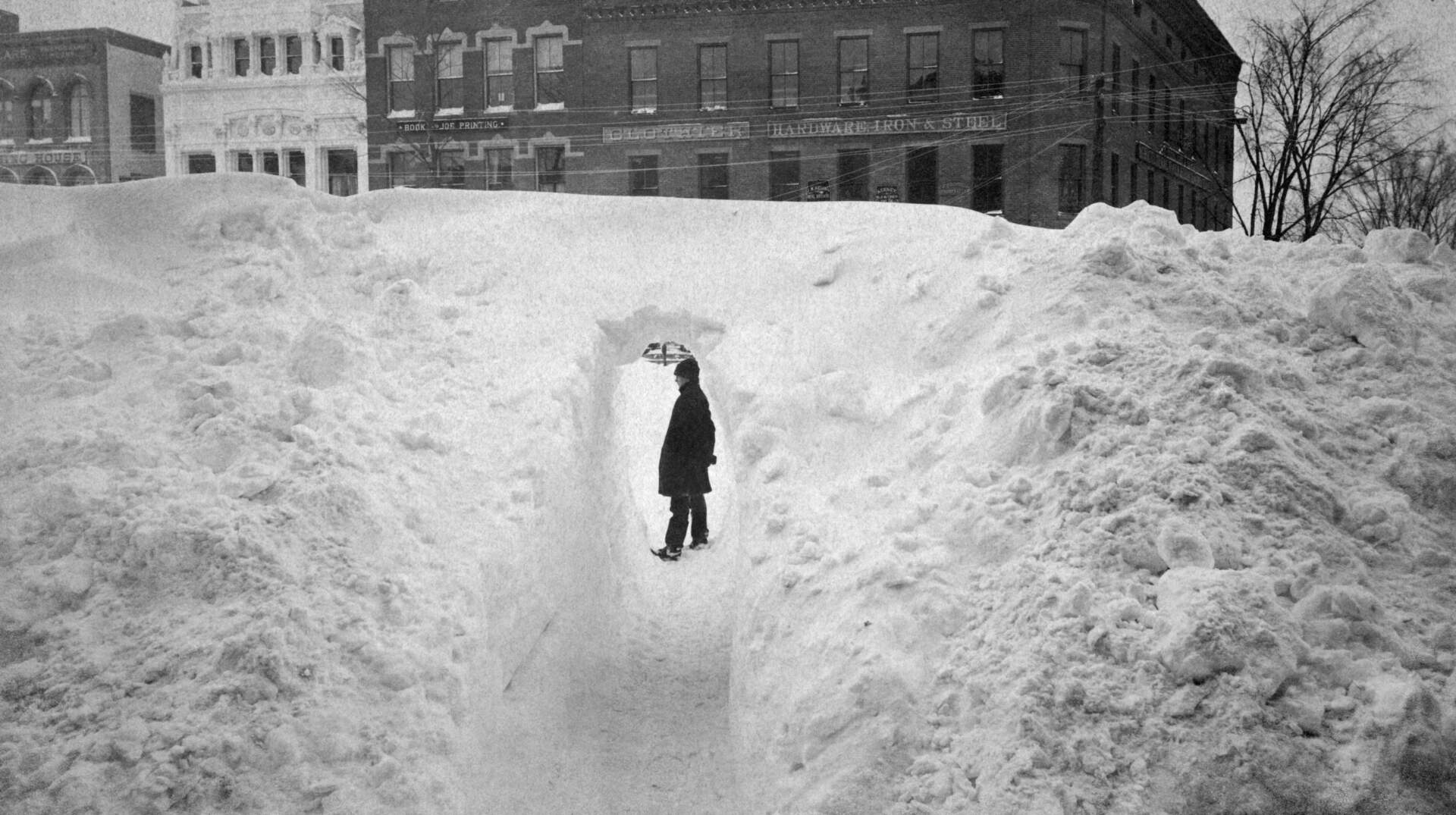
The Presidents Day blizzard of 2003
This is where we witness the Mandela Effect in Boston: Despite widespread belief, the Blizzard of '78 was not the snowiest blizzard in Boston history. That title belongs to this 2003 blusterer, which piled 27.6 inches of snow onto Logan Airport, a half-inch more than its headline-grabbing brother.
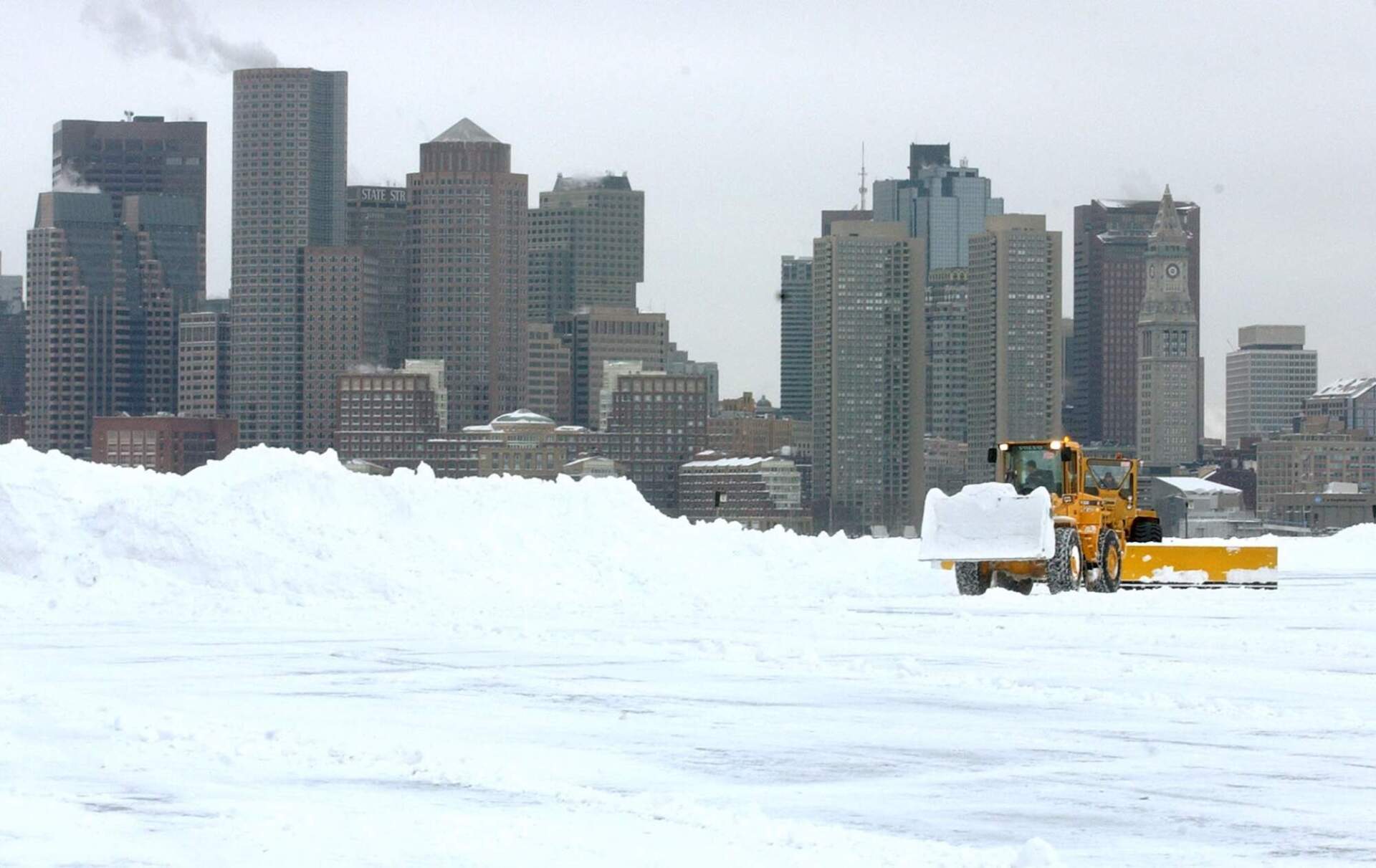
Rain
The Perfect Storm (aka the No-Name Storm), 1991
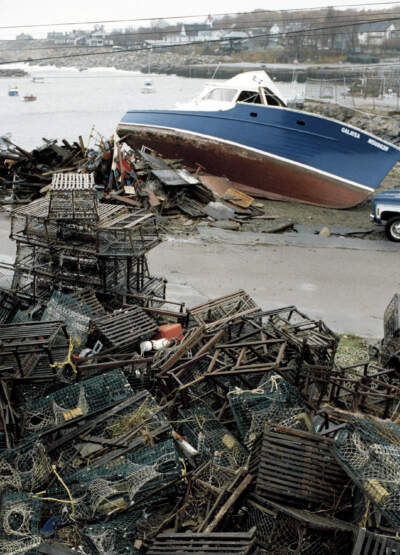
This storm had a perfect name when people called it the No-Name Storm. But when Sebastian Junger's book and ensuing movie about this hair-raiser came out, he decided to call it the "Perfect Storm," ruining an already perfect name. Oh well, nobody's perfect. The movie is good; Diane Lane's accent, famously, is not.
The storm really was an anomaly, a combination of a massive cold front and a post-tropical system, which recharged it into a behemoth. It also showed up just weeks after Hurricane Bob battered the area, leaving everyone especially bedraggled and beleaguered.
Speaking of which ...
Hurricane Bob, 1991
This is the last hurricane to make landfall in New England — which is surprising since it came in 1991, and unsurprising because meteorologists always mention this fact when there's a hurricane mean-mugging us from the Sargasso Sea.
And while Bob was a full-on hurricane that caused millions in damage, its reputation suffers because, in general, hurricanes that make it to New England are weaker than their cousins who make landfall along the Southeast U.S. (and because the aforementioned No-Name Storm stole some of its shine by catching everyone off guard and causing more damage).
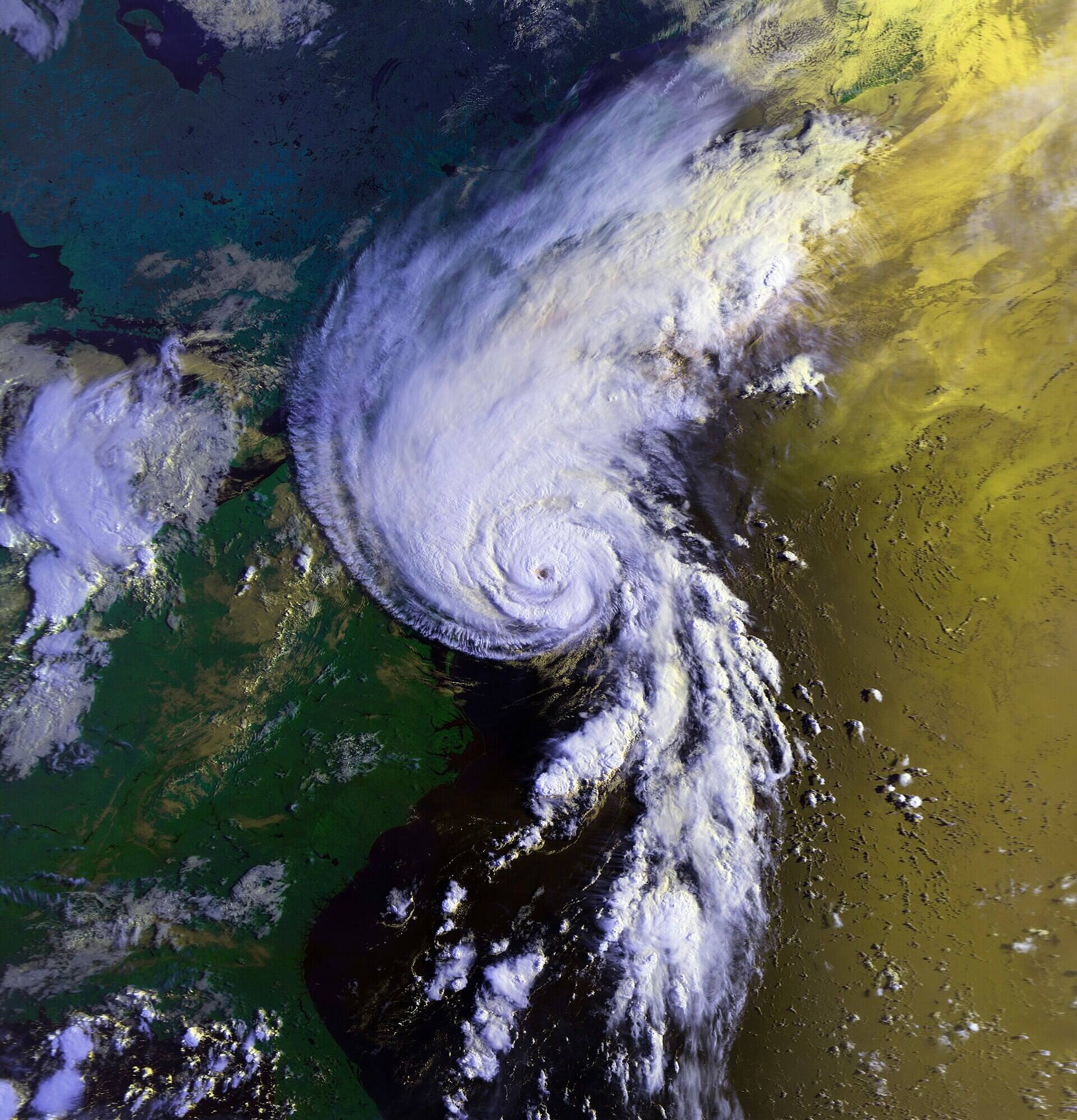
Hurricane Gloria, 1985
A few years before Bob, Hurricane Gloria came a-calling. Just a few years before that, Laura Branigan had a platinum hit with her cover of "Gloria." Never before had we experienced severe weather that came with its own soundtrack.
People were in a tizzy in the days before it landed in Long Island and Connecticut, with the director of the National Hurricane Center calling it a potential "storm of the century."
Unlike the song, however, Gloria did not hit as hard as many people feared.
Hurricane Diane, 1955
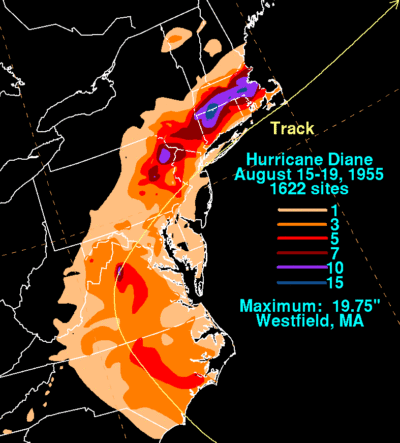
As hurricanes go, Diane was a bruiser, wreaking havoc from Cape Hatteras to Cape Cod. It was the first recorded hurricane to rack up more than $1 billion in damages, according to the National Weather Service.
Making matters worse, Diane was the capper of a busy-for-New-England couple of hurricane seasons. Hurricane Connie came a week before and spared most of eastern New England, but brought flooding to the interior. And hurricanes Carol and Edna walloped the region a year prior, in 1954.
That's a lot of damage from four major storms, and puts our current decades-long spell between hurricanes into some perspective.
OK, now it's your turn: Do you remember any of these storms? Did you walk down a hill and a mile up Broadway — and back — to get some baby formula? What about some of the big storms we missed? Tell us a bit about them in the form below, and we may use your recollection in a future update.


